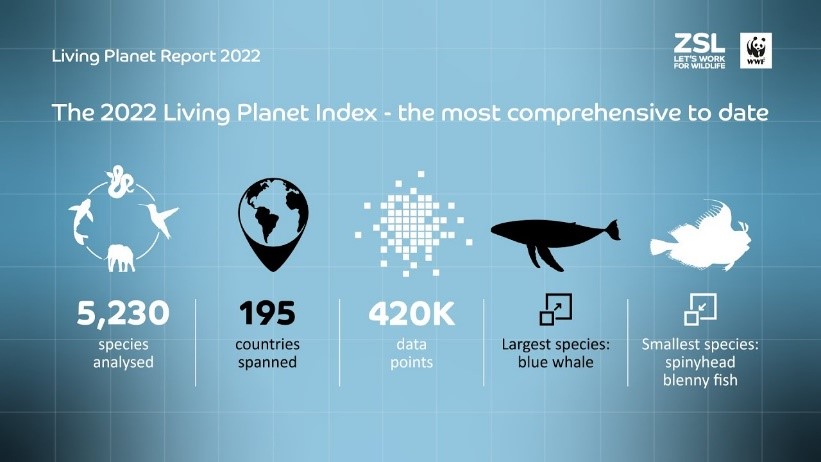PREVIOUS
Living Planet Report 2022
October 19 , 2022
920 days
870
0
- Living Planet Report 2022 is a joint endeavour of the World Wildlife Fund and Zoological Society of London.
- There has been a 69 per cent decline in the global wildlife population between the years 1970 and 2018.
- This does not mean that 69 per cent of individual animals across the world has declined.
- The report analysed almost 32,000 populations of 5,230 species.
- The Latin America and the Caribbean region, which hosts the Amazon Rainforest, witnessed the highest wildlife decline of 94 per cent between 1970 and 2018.
- Africa recorded the second highest decline of 66 per cent during the same period, followed by the Pacific (55 per cent).
- North America and Europe recorded lesser nature decline, falling by 20 per cent and 18 per cent respectively.
- Freshwater species population declined by 83 per cent.
- Mangroves continue to be lost to aquaculture, agriculture and coastal development at a rate of 0.13% per year.
- Around 137 square kilometres of the Sundarbans mangrove forest in India and Bangladesh has been eroded since 1985.

Leave a Reply
Your Comment is awaiting moderation.


